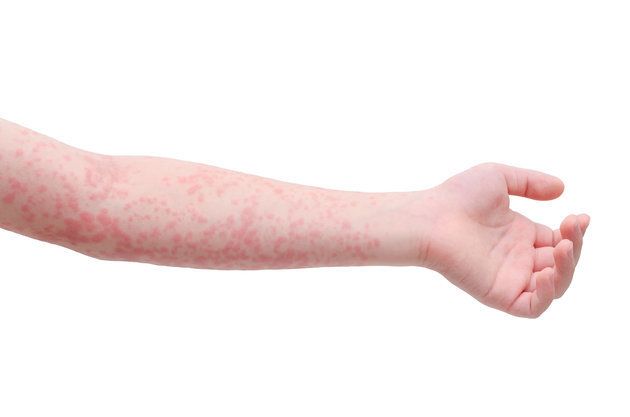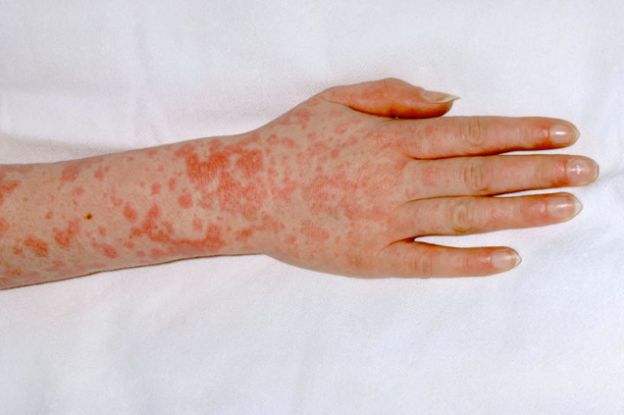Scarlet fever cases have hit the highest level in England for 50 years. There have been 11,981 cases of the infection so far this season, compared with an average 4,480 during the same period for the past five years, Public Health England (PHE) stated.
In the majority of cases (89%), it is under 10s who are suffering from the fever, with the average age being four years old. The condition, sometimes referred to as “scarlatina”, is a bacterial infection that most commonly affects children between the ages of two and eight.
In November 2017, a joint investigation by public health authorities from across England and Wales found that the incidence of scarlet fever tripled between 2013 and 2014, rising from 4,700 cases to 15,637 cases. In 2016, there were 19,206 reported cases, the highest level since 1967.
A spokesperson for PHE told HuffPost UK: “Scarlet fever is usually a mild illness that can be treated with antibiotics to reduce the risk of further complications and to minimise the risk of its spread to others.”

Scarlet fever is caused by the group A strain of the streptococcus bacteria. The infection enters the body through the throat, which is where symptoms begin.
NHS Choices states that generally, scarlet fever is much less common than it used to be, but in recent years there have been a number of significant outbreaks.
Levels of scarlet fever are typically low during the autumn and early winter, and reach the highest levels in March and April.
Signs and symptoms of scarlet fever
“Scarlet fever’s main symptoms include a sore throat, headache and fever with a characteristic sandpapery, fine, pinkish or red rash,” the PHE spokesperson told HuffPost UK.
NHS Choices states a high temperature (38.3C/101F or above), flushed cheeks and a swollen tongue can also be signs of the fever.
A rash is likely to appear one or two days later than the sore throat and headache. It usually occurs on the chest and stomach before spreading to other areas of the body, such as the ears and neck.
“The rash may be itchy,” the website states. “On darker skin the rash may be more difficult to see although its rough texture should be apparent.”

When to seek medical advice
“Parents should pay particular attention and if you or your child develops any of these symptoms you should contact your GP for assessment,” said the PHE spokesperson.
“Children diagnosed with scarlet fever are advised to stay at home until at least 24 hours after the start of antibiotic treatment to avoid spreading the infection to others.”
NHS Choices states: “Your GP should be able to diagnose scarlet fever by examining the distinctive rash and asking about other symptoms.
“They may also decide to take a sample of saliva from the back of the throat so it can be tested in a laboratory to confirm the diagnosis.”
If your child is infected, aim to keep them away from others as much as possible, including taking them out of school. Make sure they don’t share anything they have come into contact with, such as utensils, cups, towels and sheets – and wash these items thoroughly after use.
For more information, visit the NHS Choices website.